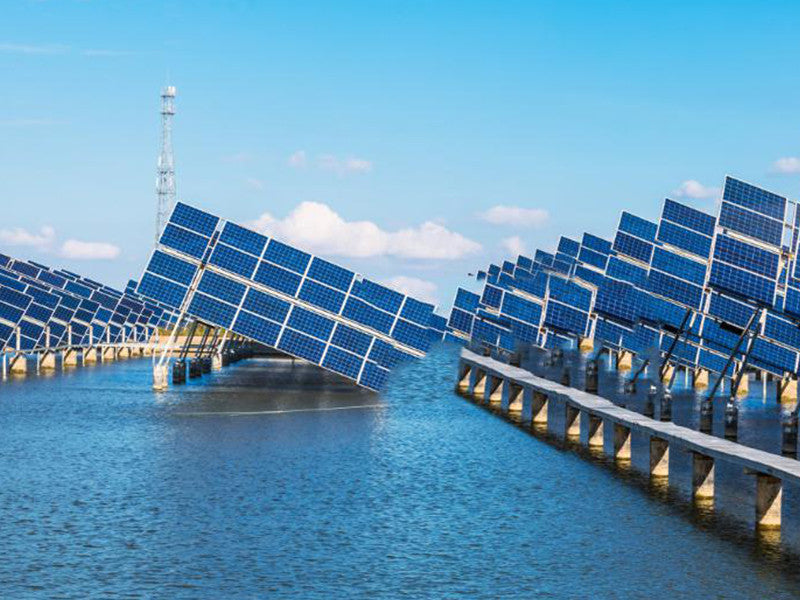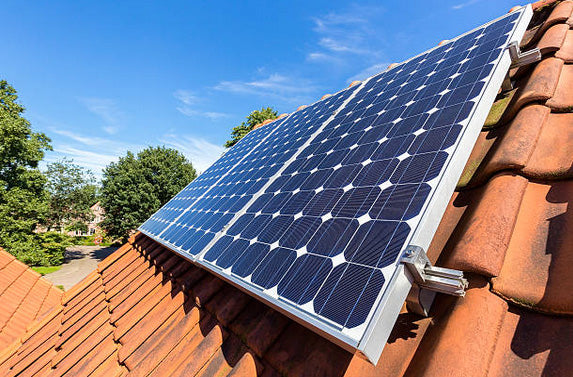The selection of azimuth and inclination angle of solar cell module is one of the most important factors in the design of solar photovoltaic system. The so-called azimuth generally refers to the angle in the East, West, North and south directions. For the solar photovoltaic system, the azimuth determines the incident direction of sunlight and the lighting conditions of hillsides in all directions or buildings in different directions. The inclination angle is the angle between the ground plane (horizontal plane) and the solar cell module.
In China, the azimuth of solar cells is generally due south, so as to maximize the power generation per unit capacity of solar cells. If it is limited by the places where solar cells are set, such as roofs, earth slopes, mountains, building structures and shadows, it should be considered to be consistent with their azimuth, so as to make full use of the existing terrain and effective area, and try to avoid the shadows caused by surrounding buildings, structures or trees. In the design of some solar photovoltaic building integrated power generation systems, when the laying area of solar cells in the due south direction is not large enough, solar cells can also be laid in the due east and west directions.
The inclination angle is the included angle between the plane of the solar cell array and the horizontal ground, and it is hoped that this included angle is the best inclination angle when the power generation of the array is the largest in a year. The best inclination angle in a year is related to the local geographical latitude. When the latitude is high, the corresponding inclination angle is also large. However, like the azimuth, the design should also consider the restrictive conditions such as the inclination angle of the roof and the inclination angle of snow sliding (the slope is greater than 50% - 60%). For the slope angle of snow fall, even if the power generation is small in the snow period, the total annual power generation also increases. Therefore, especially in the grid connected power generation system, the snow fall is not necessarily given priority. In addition, other factors should be further considered.
The most ideal tilt angle is to make the annual power generation of solar cells as large as possible, while the difference between power generation in winter and summer is as small as possible. Generally, the local latitude or local latitude plus a few degrees is taken as the inclination angle for the installation of local solar cell modules. Of course, if computer-aided design software can be used, the optimal calculation of solar tilt angle can be carried out, so that both can be taken into account, which is particularly important for high latitudes.
There is a great difference in the amount of horizontal solar radiation between winter and summer in high latitude areas. For example, there is a difference of about 5 times in Heilongjiang Province. If it is designed according to the horizontal radiation parameter, the storage capacity of the battery in winter is too large, resulting in the increase of the design capacity and investment of the battery. When the optimal inclination angle is selected, the difference between winter and summer radiation on the solar cell surface becomes smaller, and the capacity of the battery can also be reduced, so as to obtain an equilibrium, reduce the system cost and make the design more reasonable.
In winter, the sunshine time is short, the solar radiation energy is small, while the load working time at night is long and the power consumption is large. Therefore, the design of the system should take winter into consideration and be determined according to the inclination angle that can obtain the maximum power generation in winter. The inclination angle should be larger than the local latitude angle. For the photovoltaic system that mainly supplies power for summer loads such as photovoltaic water pumps, refrigeration and air conditioning, it should be considered to provide the maximum power generation for summer loads, and its inclination angle should be smaller than the angle of local latitude.
Welcome to visit SOLARPARTS to know more information.



